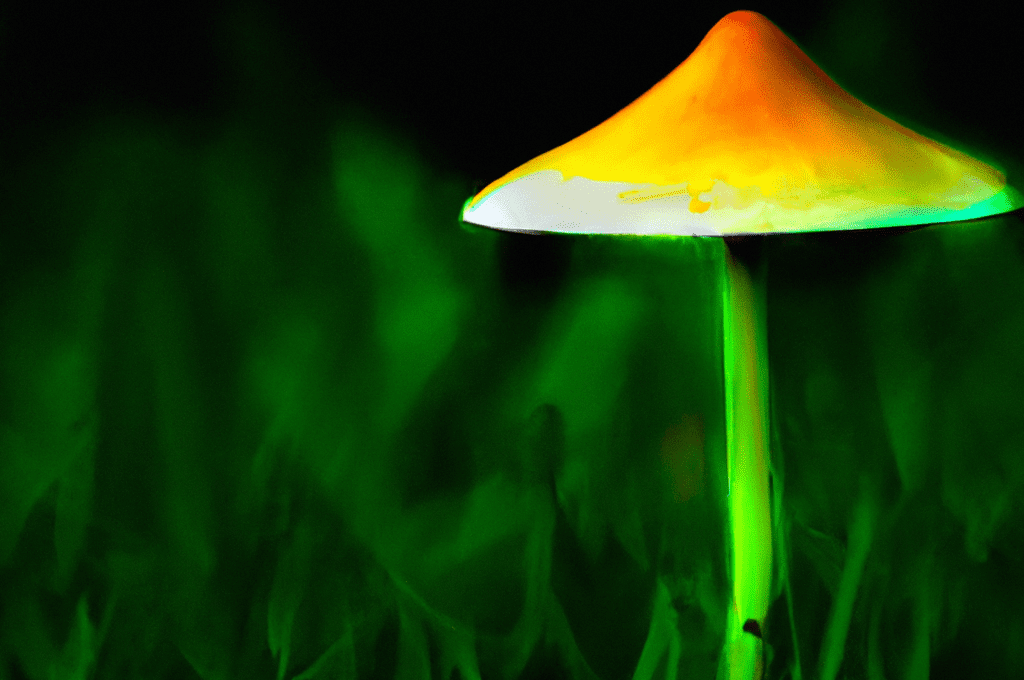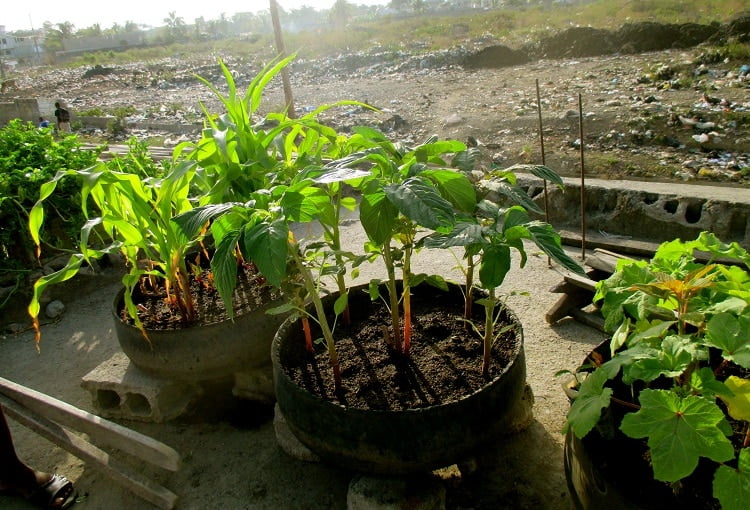Are you looking to grow a healthy and vibrant garden? Look no further than the humble mushroom! These fungi may not seem like much, but they are actually soil superheroes that play a vital role in ensuring your plants are strong and fruitful.
Mushrooms are primary decomposers, breaking down organic matter and re-fertilizing the soil. They also form mycorrhizal relationships with over 95% of plant species, which means they work together to exchange nutrients and support each other’s growth.
By incorporating mushrooms into your gardening practices, you can ensure that your home-grown produce is not only delicious, but also packed with the nutrients your body needs for optimal health.
So let’s dive into the many benefits of mushrooms to soil health and explore how they can help you achieve your gardening goals!
Quick Summary
- Mushrooms are essential for the health and productivity of gardens as primary decomposers that break down organic matter and re-fertilize the soil.
- Mycorrhizal relationships between fungi and plant roots provide nutrients and water to plants in exchange for carbohydrates, increasing the plant’s ability to absorb nutrients and water from the soil.
- Fungal networks extend far beyond plant roots, allowing for nutrient exchange between plants and different species, promoting a healthy underground ecosystem that benefits all plants.
- Incorporating mycorrhizal fungi into the garden through mushroom cultivation creates a nutrient-rich environment that supports the growth of beneficial microorganisms, leading to stronger, more resilient plants packed with nutrients for optimal health.
Benefits to Soil Health
You’ll be amazed to know that mushrooms are primary decomposers, breaking down dead organisms before insects. This is just one of the many ways they benefit soil health.
This means that when mushrooms are present in your soil, they’re hard at work breaking down organic matter into usable compounds for plants. Without them, organic materials wouldn’t break down and re-fertilize soil, which would negatively impact your garden’s health.
Mushroom cultivation also has a positive impact on biodiversity. The hyphae of mushrooms extract nutrients from biomass, making it easier for plants to access them. Fungi spores spread hyphae to search for decaying organic matter, which can be anything from fallen leaves to dead insects.
This process ensures that nothing goes to waste in your garden, and everything is being utilized to its fullest potential. By incorporating mushrooms into your soil, you’re creating a diverse and thriving ecosystem for your plants to grow in.
Can Hydroponic Microgreens Benefit from Mushroom Soil?
Hydroponic microgreens for high-yield growth can greatly benefit from mushroom soil. This unique soil amendment, rich in organic matter, enhances nutrient availability and promotes vigorous growth. The beneficial bacteria and fungi present in mushroom soil foster a healthy root system, leading to increased yields and nutrient density in hydroponic microgreens. Harnessing the power of mushroom soil can optimize the growth potential of these delicate greens.
Mycorrhizal Relationships
When planting in your garden, it’s important to consider the fungal networks that exist underground and how they can benefit your plants.
Mycorrhizal relationships are symbiotic connections between fungi and plant roots, where the fungi provide nutrients and water to the plants in exchange for carbohydrates. There are two main types of mycorrhizae: endomycorrhizae and ectomycorrhizae.
Endomycorrhizae penetrate plant roots and form arbuscules, which are tiny structures that allow the fungi to exchange nutrients with the plant. Ectomycorrhizae, on the other hand, form a sheath around the plant roots and exchange nutrients through the mantle.
These mycorrhizal relationships are essential for healthy plant growth, as they increase the plant’s ability to absorb nutrients and water from the soil. Fungal networks extend far beyond the plant roots, allowing for nutrient exchange between plants and even different species.
By incorporating mycorrhizal fungi into your garden, you can ensure that your plants have access to the nutrients they need for optimal growth. So, next time you’re planting, consider the types of mycorrhizae that exist in your soil and how you can promote healthy fungal networks for your plants.
Role in Nutrient Exchange
To promote optimal nutrient exchange in your garden, it’s important to understand the role of mycorrhizal fungi in facilitating communication and nutrient sharing between underground networks.
Mushroom cultivation can help enhance this process, as fungal spores spread throughout the soil to search for decaying organic matter and extract nutrients from biomass. This makes it easier for plants to access the nutrients they need to grow strong and healthy.
When you cultivate mushrooms in your garden, you’re not just adding a delicious ingredient to your meals – you’re also promoting a healthy underground ecosystem that benefits all of your plants.
As the mycelium of the mushrooms breaks down organic matter, it creates a nutrient-rich environment that supports the growth of beneficial microorganisms. This, in turn, leads to healthier soil and stronger, more resilient plants.
So if you want to give your garden a boost, consider adding mushrooms to the mix and watch as your plants thrive.
Frequently Asked Questions
How do mushrooms obtain their nutrients?
Mushrooms obtain their nutrients through fungal digestion techniques that involve hyphae extracting nutrients from decaying organic matter. This nutrient acquisition process makes it easier for plants to access them, forming a beneficial mycorrhizal relationship.
Can mushrooms grow in soil with low organic matter?
Yes, mushrooms can grow in soil with low organic matter, but it may not be ideal for soil fertility. Mushroom cultivation in such soil requires additional nutrients and amendments to ensure healthy growth and fruiting.
Are all mushrooms primary decomposers or are there exceptions?
Mushroom cultivation varies among species. While most mushrooms are primary decomposers, there are exceptions. Secondary decomposers break down organic matter that has already been partially decomposed by primary decomposers.
Do mycorrhizal relationships only benefit plants or do they benefit fungi as well?
Did you know that mycorrhizal relationships benefit both plants and fungi through nutrient exchange? Fungal symbiosis allows for improved nutrient absorption by plants, while fungi gain access to carbon compounds. It’s a win-win!
What is the process by which mushrooms break down lignin?
Mushrooms break down lignin through a lignin degradation mechanism using fungal enzymes. This process is part of fungal metabolism and contributes to nutrient uptake. The breakdown of lignin allows for easier access to nutrients by plants.









